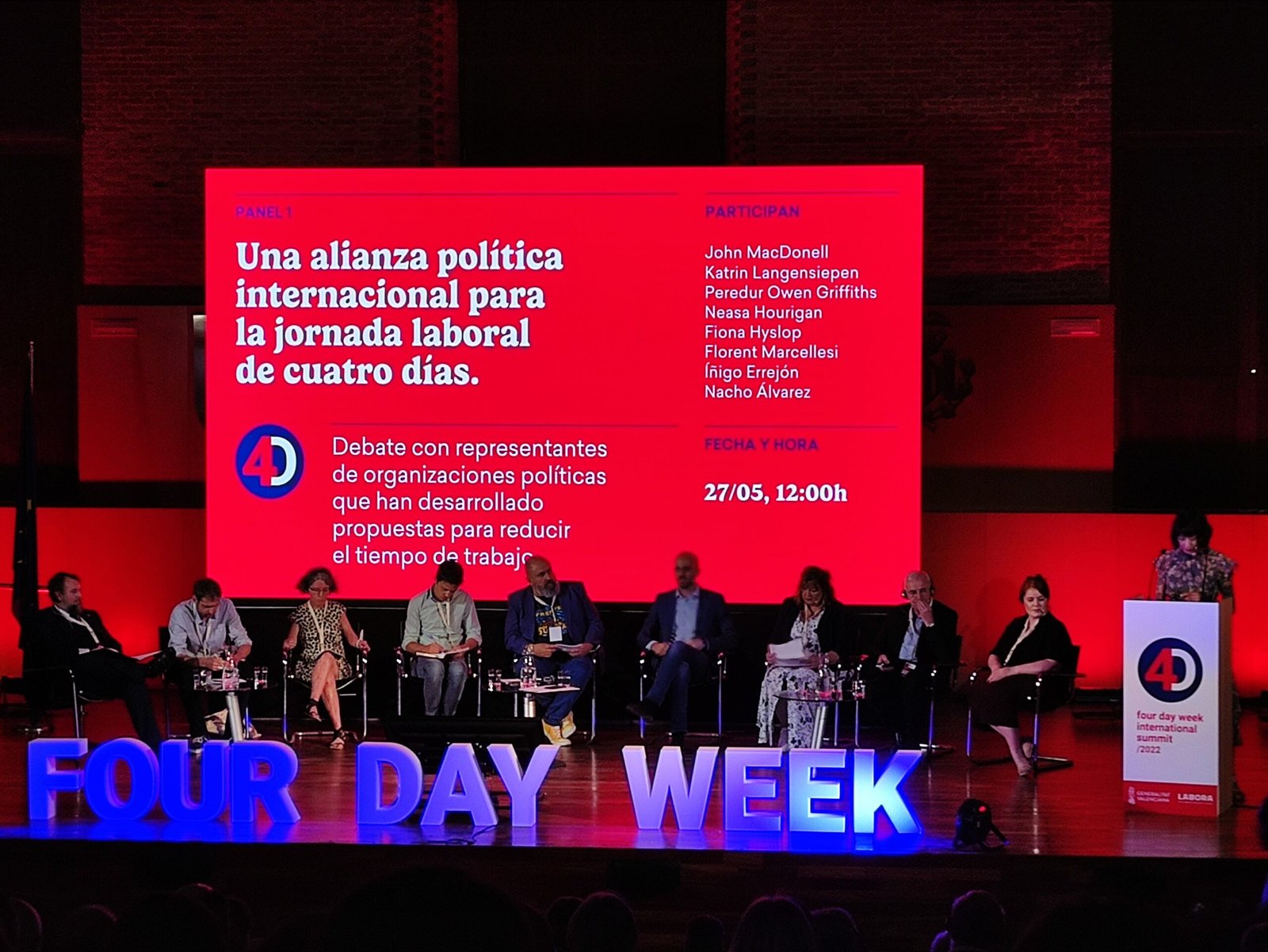The Global Experiment That’s Changing Everything
Picture this: Monday morning rolls around, but instead of dreading five long days ahead, you’re only looking at four. Across the globe, 56 of 61 companies in the world’s largest four-day workweek trial decided to make the change permanent, with 15% of employees saying no amount of money would convince them to go back to a five-day schedule. The movement isn’t just a pipe dream anymore—it’s becoming a serious business strategy with shocking results. In Germany, 73% of companies that tried the four-day model say they’re never going back, with 45 companies from tech, finance, and manufacturing sectors participating in a six-month trial starting in February 2024. This isn’t just about giving people more time off; it’s about fundamentally reshaping how we think about work, productivity, and life itself.
Productivity That Defies Common Sense
Microsoft Japan reported a 40% boost in productivity when they implemented a four-day workweek pilot in 2019, proving that working less doesn’t mean producing less. Think about it like this: if you knew you only had four days to get everything done, wouldn’t you naturally cut the fluff and focus on what really matters? Research shows that a four-day workweek may actually increase productivity by significantly increasing worker contentment and teamwork while decreasing stress levels. Companies have achieved this by cutting low-value activities like excessive meetings, with employees using their third day off for personal errands they would otherwise cram into workdays. The magic happens when you force efficiency through constraint rather than trying to squeeze more hours out of exhausted workers.
Mental Health Revolution in the Making

The psychological benefits are nothing short of transformative. In the UK’s massive trial, 39% of employees reported being less stressed and 71% had reduced levels of burnout at the end of the experiment. About 40% of respondents experienced less work-related stress, with more than 40% saying their mental health had improved, including significant decreases in anxiety and negative emotions. It’s like giving people their lives back one day at a time. Almost 40% of employees said their physical health improved during the pilot period, with nearly half reporting they weren’t as tired and 40% finding it easier to sleep. The ripple effects touch every aspect of human wellbeing, creating a healthier workforce that’s more engaged when they are working.
The Business Case That’s Hard to Ignore

Here’s where it gets really interesting for employers. Companies saw revenue stay broadly the same during trial periods, rising by 1.4% on average, but when compared to previous years, organizations reported revenue increases of 35% on average. The number of staff leaving participating companies decreased significantly, dropping by 57% over the trial period. One U.S. company, Exos, saw their turnover rate fall from 47% in 2022 to 29% in 2023 after implementing a four-day workweek. When you consider the cost of constantly hiring and training new employees, keeping your existing team happy becomes a massive financial advantage. Tyler Grange, a UK environmental consultancy, reported productivity increased by 22%, job applications up 88%, and absenteeism down by 66%.
Environmental Impact That Could Save the Planet
The environmental benefits are staggering and often overlooked. A study from 1970 to 2007 found that reducing work hours by 10% could drop ecological footprint, carbon footprint and CO2 emissions by 12.1%, 14.6% and 4.2% respectively, with Microsoft Japan reporting a 23% decrease in electricity costs during their trial. One company in the 2022 UK trial saw their CO2 emissions drop by almost 30%, mostly because of reduced transport. Researchers estimate that one less workday could reduce a carbon footprint by more than 30%, with one study suggesting the UK could shrink emissions by 127 million tonnes (around 20%) by moving to a four-day week by 2025. If half of America’s 135 million commuters worked from home instead of commuting just half the time, it would be equivalent to removing 10 million cars from the road. The planet gets a breather while people get their lives back.
Gender Equality Gets an Unexpected Boost
The time men spent caring for children increased by more than double that of women during four-day workweek trials, pointing to positive effects on gender equality. This isn’t just about women getting more time—it’s about men getting the opportunity to be more involved parents and partners. Following the UK trial, 21% of employees reported a decrease in childcare costs and more men than women reported increased involvement with childcare duties. A four-day workweek would enable working people, regardless of gender, to have more time for childcare and family responsibilities without leaving the workforce, giving every family member eight more hours weekly for personal responsibilities. It’s leveling the playing field in ways that decades of policy discussions haven’t achieved.
The Flexibility Factor That Changes Everything
One size doesn’t fit all, and that’s actually the beauty of it. Research shows there’s no one-size-fits-all recipe for the four-day workweek, with employees working variety of schedules depending on individual and team needs. Some companies give employees a set day off every week while others use rolling schedules, with some working two half-days and others still working five days but shorter hours to accommodate school pickup and drop-off. At Exos, employees get “You Do You Fridays” where they can take time off, catch up on work, or use leisure time as they see fit, with salaried employees moving to a four-day 40-hour workweek and hourly staff choosing between 32-40 hours based on their preferences. The flexibility means companies can adapt the model to their specific needs rather than forcing a rigid structure.
Industries That Are Leading the Charge

Companies from tech, finance, and manufacturing sectors have successfully implemented four-day workweeks, with trials taking place across multiple countries including Brazil’s first four-day workweek trial in Latin America. South Africa kicked off its own trial in March 2023 with 28 businesses, and after the trial, most companies wanted to continue with only three halting it outright. South Korea launched a four-day week trial in September 2024 with 50 organizations in Gyeonggi Province to tackle the country’s culture of burnout. Even traditionally rigid industries are finding ways to make it work, proving that the model isn’t limited to tech startups or creative agencies. Tyler Grange, an environmental consultancy, had been discussing the switch for over four years and invested in new technology specifically to make the four-day week happen.
The Financial Reality Check

Let’s talk money—because that’s usually where the rubber meets the road. Nearly a third of employees said they would require a 26-50% pay increase to go back to a five-day week, with 8% wanting 50% higher pay. Companies who participated in global trials reported revenues increased by approximately 8% over the trial period and were 37.55% higher than the same period in 2021. Employees take fewer sick days due to decreased work-related stress, while companies save on electricity, office supplies, and cafeteria costs. The math is starting to add up in favor of fewer days, not more. Around 63% of UK employers said a four-day workweek helped them attract and retain talent, with two-thirds of British businesses noting improvements in staff productivity.
The Challenges Nobody Talks About
It’s not all sunshine and rainbows. Critics argue the policy isn’t feasible for many industries including childcare and healthcare which already face staff shortages, and some workers would rather work more and earn more. Customer-facing businesses struggle with creating enough schedule slack for a four-day week due to extra hiring costs, and there’s risk that employees might end up working longer, uninterrupted hours while rushing to finish work in four days. Of the 61 UK companies in the 2022 pilot, a few discontinued the four-day workweek, with one small consultancy reporting problems managing client and stakeholder expectations despite improved staff morale and efficiency. If workers use their extra day off for carbon-intensive activities like flights or driving sports cars, the environmental benefits could backfire, and cramming five days of work into four with longer hours can cause anxiety and performance-related stress.
Implementation Secrets That Actually Work
Success isn’t accidental—it requires deliberate strategy. As one CEO noted, “It absolutely doesn’t happen by magic. You can’t just drop a day and carry on as usual, because how stressful would that be?” Successful companies keep all meetings to 30 minutes, ensure meetings start on time, block off focus time on calendars—sometimes declaring Monk Mode Mondays—and are more mindful about emails and inbox time. Companies must ensure employees understand that having Fridays off isn’t just another paid vacation but an opportunity to recharge and handle responsibilities so they’re less stressed during the workweek, following the ethos that work + rest = success. The key is redesigning work processes, not just cutting a day.
Global Momentum That’s Impossible to Ignore

Several large-scale trials of shorter workweeks are underway globally, with Rep. Mark Takano introducing the Thirty-Two Hour Workweek Act to make four-day weeks federal law in the US. Trade unions across Europe are calling for governments to implement four-day workweeks, with Belgium winning the right for employees to perform a full work week in four days without salary loss. In the UK, the Labour Party has pledged a 32-hour four-day work week within ten years should it come to power. A global study showed that most of 33 companies and 903 employees in four-day workweek trials across the US, Ireland, UK, Japan, Iceland, Spain, and New Zealand are unlikely to return to a standard five-day workweek. The wave is building, and it’s becoming harder for governments and companies to ignore.
The Cultural Shift Nobody Saw Coming
This isn’t just about working less—it’s about working differently. As one expert noted, the biggest potential benefit is “the shift away from a focus on hard work to a focus on smart work. It’s the cultural change in how we work and the impact that could have on how we live”. “Burnout culture cannot be sustained,” says Dr. Wen Fan. “Employers need to find a way to recruit and retain. One option is to increase salaries, but not all businesses have that capacity—an alternative is more benefits, like a schedule change”. People are more than their work output, and giving back time to workers to be with friends and family, cultivate hobbies, and contribute to communities supplies not only benefits but justice. We’re witnessing the birth of a new relationship between humans and their work.
The four-day workweek isn’t just a trendy workplace perk—it’s a fundamental reimagining of what work could be in the 21st century. From boosting productivity and mental health to fighting climate change and advancing gender equality, the ripple effects reach far beyond the office walls. Sure, there are challenges to overcome, but the evidence is mounting that working smarter, not longer, might be the key to a better future for everyone. With every weekend becoming a long weekend, “we’re all raring to go when we start work again on Monday morning”. The question isn’t whether this will happen—it’s how quickly the rest of the world will catch up to what these pioneering companies already know. What would you do with that extra day?

